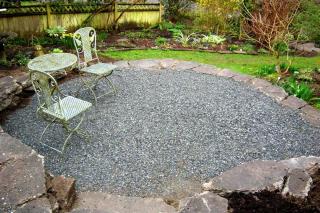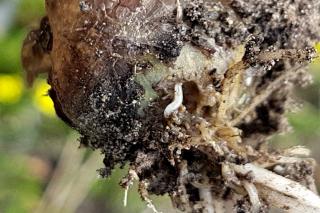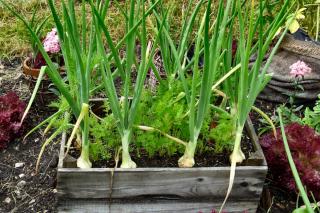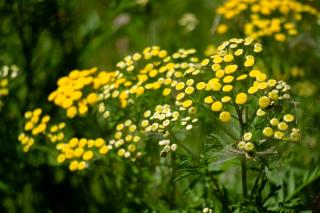

A fly that is slightly larger than the common housefly, onion fly is a destructive pest for certain Alliaceae plants. Not only do they reproduce extremely fast, but the larvae trigger bulb rot and eat the bulbs out from the inside.
Discover a few tips and tricks to avoid having to deal with this pest at all. And if your plants are already under attack? There are effective natural treatments, worry not!
 Part of the Anthomyiidae family, the onion fly (Delia antiqua) belongs to the Diptera order and the Brachycera sub-order. It looks just like the common housefly, except that it seems a bit longer and thinner.
Part of the Anthomyiidae family, the onion fly (Delia antiqua) belongs to the Diptera order and the Brachycera sub-order. It looks just like the common housefly, except that it seems a bit longer and thinner.
Identification is confirmed if you can count five dark bands on its thorax. The body is yellow-gray and is covered in hairs. It has long black legs. Its wings are transparent.
Eggs are about 1.5mm in size, and they’re white and striped. The white larva of the onion fly is small, less than ½ inch (1 cm). They’re what is called “onion maggot“.
Onion fly emerge from hibernation in April-May, depending on the region. These adult insects reproduce and lay batches of 200 eggs every two weeks!
An adult lives for one to two months. Females lay their eggs at the base of leaves, on the root crown, and on exposed portions of the bulbs. A few days later, a larva hatches from each egg. It’ll develop inside the host plant for more or less three weeks. After that time, the maggot burrows into the ground to become a nymph and, through metamorphosis, becomes a fly.
If temperatures are lower than 60°F (15°C), the insect enters a form of hibernation called diapause, and emerges in the following Spring. Per year, in most temperate-climate countries, there can be from 2 to 4 generations of onion fly depending on the area and weather.
 As the name shows, of course the onion is a favorite host plant of this onion fly – but it isn’t the only one! Leek, chives, garlic and shallot are also targets of this pest. The larvae are what causes the most damage. As they grow, they nestle in the tissue of the onion’s bulb, and at the base of the onion near the roots.
As the name shows, of course the onion is a favorite host plant of this onion fly – but it isn’t the only one! Leek, chives, garlic and shallot are also targets of this pest. The larvae are what causes the most damage. As they grow, they nestle in the tissue of the onion’s bulb, and at the base of the onion near the roots.
They burrow through the flesh and feed on decaying tissue. These wounds and burrows are also entry points for disease. Small plants die quickly, and larger bulbs become more vulnerable to disease and to other pests.
From the outside, all you see is the leaves turning yellow and, all of a sudden, collapsing. If you pull the onion out of the ground, you’ll realize the bulb is rotten and teaming with maggots.
 Plant carrot near your onion. This well-documented companion plant combination works because onion repels the carrot fly and vice-versa.
Plant carrot near your onion. This well-documented companion plant combination works because onion repels the carrot fly and vice-versa.
 As soon as you notice infected plants, pull them out immediately and burn them.
As soon as you notice infected plants, pull them out immediately and burn them.